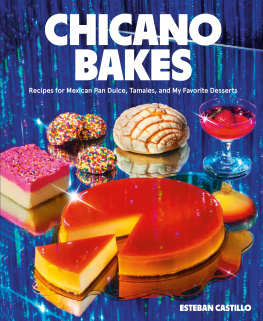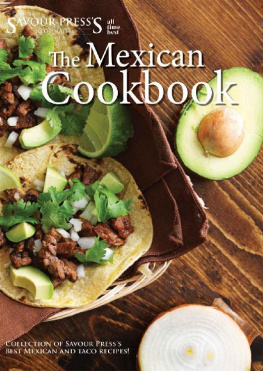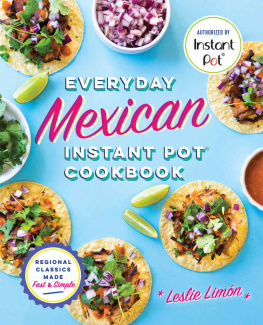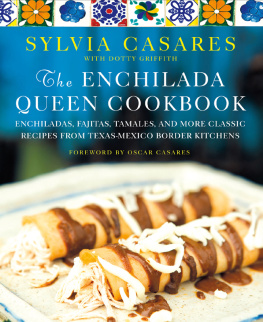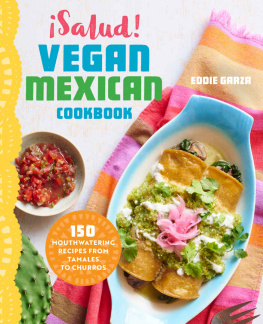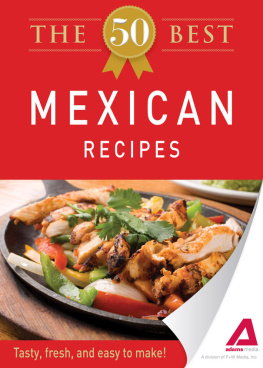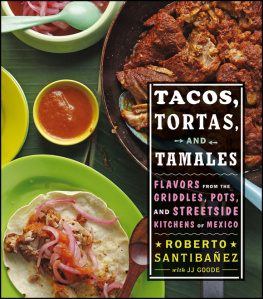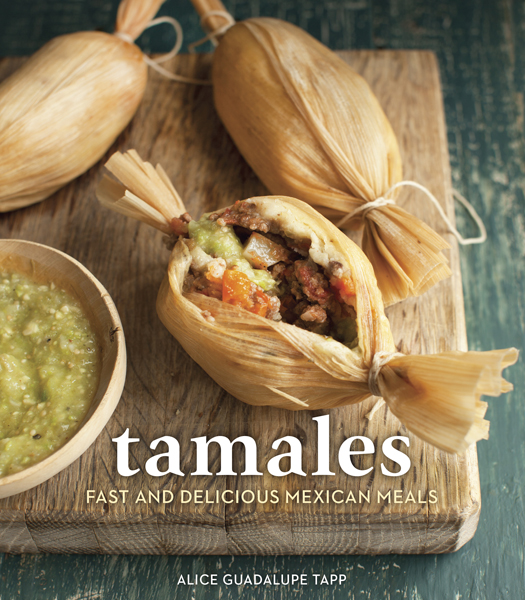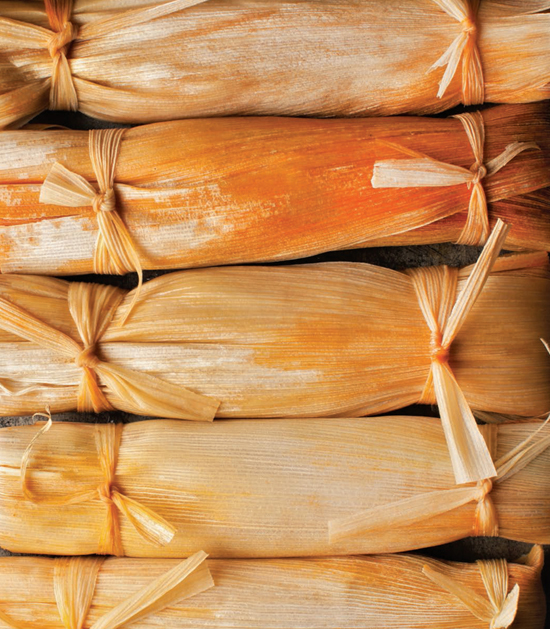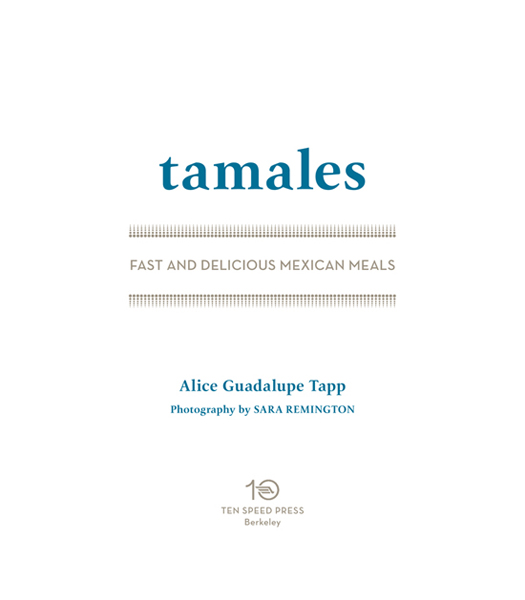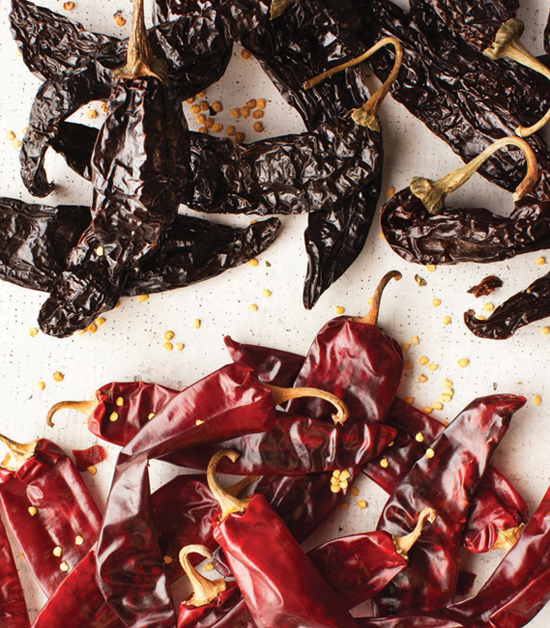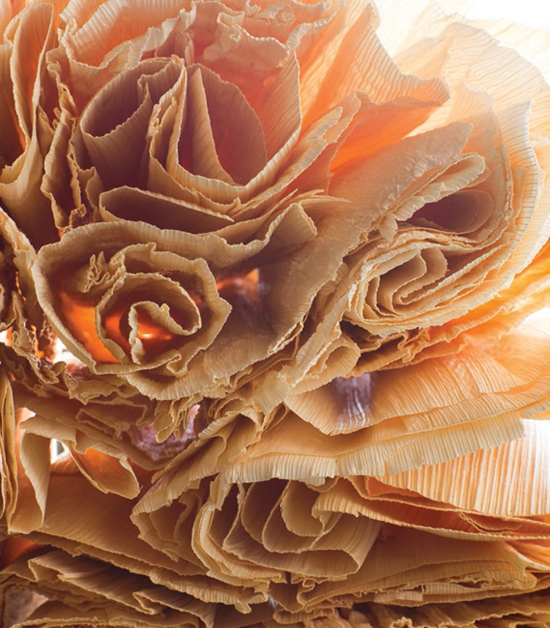Copyright 2014 by Alice Guadalupe Tapp
Photographs copyright 2014 by Sara Remington
All Rights Reserved.
Published in the United States by Ten Speed Press, an imprint of the Crown Publishing Group, a division of Random House LLC, a Penguin Random House Company, New York.
www.crownpublishing.com
www.tenspeed.com
Ten Speed Press and the Ten Speed Press colophon are registered trademarks of Random House LLC.
Library of Congress Cataloging-in-Publication Data
Tapp, Alice Guadalupe, 1944-
Tamales / by Alice Guadalupe Tapp.
pages cm
Includes index.
1. Tamales. 2. Cooking, Mexican. I. Title.
TX836.T368 2014
641.5972DC23
2014010391
Hardcover ISBN: 978-1-60774-596-9
eBook ISBN: 978-1-60774-597-6
Design by Chloe Rawlins
Production by Anitra Alcantara
Food and prop styling by Christine Wolheim
Illustrations by Diane Tarango first appeared in a slightly different form in Tamales 101
v3.1
TO STEVEN AND TAMARA
Contents
Introduction
I LOVE TAMALES. I love making them, and I love to create new varieties. I love making the masa and the fillings, and I love the process of assembling them. Most of all, I love to serve them to my family and friends and experience the satisfaction they get when tasting all the new and different flavors. They have been my ever-so-eager tamale-tasting guinea pigs for many years.
Shortly after my first book, Tamales 101 , was published, I began teaching tamale-cooking classes at various culinary schools on the West Coast. I enjoyed teaching the process and knew the classes would increase the visibility of my book. I quickly realized that, for most students, making traditional tamales was too prep-intensive and time-consuming. Many of the students came away from those classes saying they would most likely not make the tamales at home because they were too much work and that they would be perfectly happy to purchase them at our tamale shop. This proved to be an excellent vehicle to promote my business; however, I truly want to keep the tamale-making tradition alive and encourage my students to make their ownI strongly believe the best tamales come from our own kitchens.
To help preserve this tradition, I began trying to come up with new methods to simplify the process and make it easier and more appealing for home cooks. It took me several years of research and trial and error, but the idea to make simple and great-tasting tamales became a mission of sorts.
My memories of cooking with my mother as a child helped me tremendously. In addition to teaching me everything she knew about tamale making, she taught me how to use time-saving techniques and productssuch as ready-made moles and canned roasted chilesto make recipes faster and easier, without compromising taste, richness, or satisfaction in the end result.
In addition to experimenting with shortening the process, which can often include up to ten steps, I experimented with different tamale styles. Tamales can be wrapped and assembled in a variety of ways, from quick and easy corundas, where the filling and masa are mixed together, to inside-out tamales, where the fillings are served on top or on the side of plain, unfilled tamales called tontos . Both of these styles can be assembled in only two or three steps. And if you can shorten the process and change up the style, who says you cant experiment with fillings, too? If you like a particular food, it will probably work in or on a tamale or corunda.
In todays world, we are so often busy and pushed for time, and the idea of setting aside one or two days to make tamales is saved for special occasions, such as Christmas, when women in Mexico traditionally gather to make traditional tamales in enormous quantities. But we should also be able to enjoy tamales on a weeknight! All of the recipes in this book shorten the process to less than an hour, once the fillings are prepared (many of which can be made well in advance), making tamales a more accessible, everyday menu item. If you would like to try your hand at tamale making but have found it to be too daunting a task, this book is especially for you.
I grew up in a kitchen, learning to cook mainly from my mother, an artist who dreamed of becoming an opera singer. Like many women of her generation, she married and had children instead. All of her artistic ability then went into cooking and homemaking. We were a culinary family, though, and my grandfather, grandmother, and aunts also helped teach me to cook.
All of my first books were cookbooks, and I still have my mothers torn, stained, falling-apart copy of The Good Housekeeping Cookbook . Ive patched and taped it countless times over the years. I have old, brown, and stained small pieces of paper and index cards that are inscribed with recipes, mostly the favorites my grandmother, mother, and mother-in-law used. I began collecting recipes in my late teens. I asked everyone and anyone who had a good recipe to share it. For many years I would ask for the exact recipe, but eventually I was able to just get the list of ingredients and figure it out myself.
With an abundance of experience from my career in the entertainment business and establishing my own successful businesses, I wanted to create a business involving my love of tamales. My daughter, Tamara, and I opened our tamale specialty shop, Tamaras Tamales, in the Marina del Rey area of Los Angeles. We have had continued success for nineteen years. Tamara now runs the shop on a daily basis and I help with a few of the details. When asked what I attribute our success to, I usually reply that our product is good, we always put the financial well-being of the business first, and Tamara and I work well togetherwe love and respect each other and are grateful for our shared creative process. Also, the fact that weve always loved having our tamale business and always loved our customers doesnt hurt! Along the way, the success of Tamaras Tamales has lead to a bunch of other fun and rewarding opportunities, such as teaching tamale-making classes at culinary schools, earning top honors at tamale contests, recognition from many well-known chefs, and being able to make donations of tamales to nonprofits and benefits.

GLUTEN FREE
The recipes in this book are completely gluten free. Traditional tamales are 99.9 percent gluten free, usually containing gluten only when bread crumbs or flour are used to thicken mole sauces or roux. However, many Latin cooks use corn masa or corn tortillas for thickening sauces, which is the perfect option for those on a gluten-free diet. Be careful, though, when purchasing any type of canned, bottled, frozen, or freshly prepared moles and always check the ingredients for any added gluten in the form of thickeners, stabilizers, and so on.


